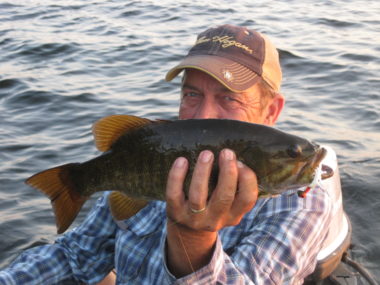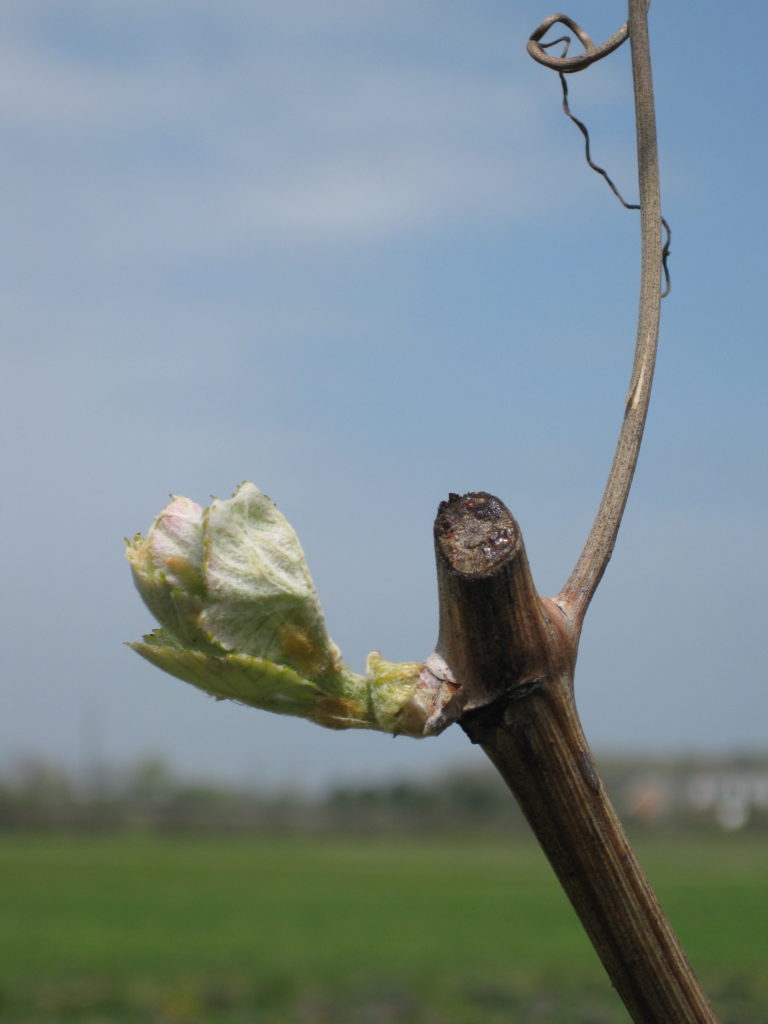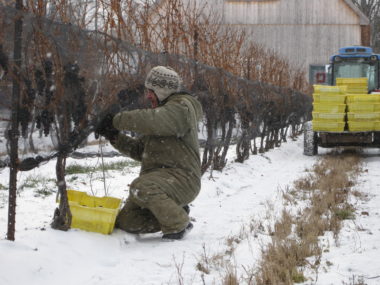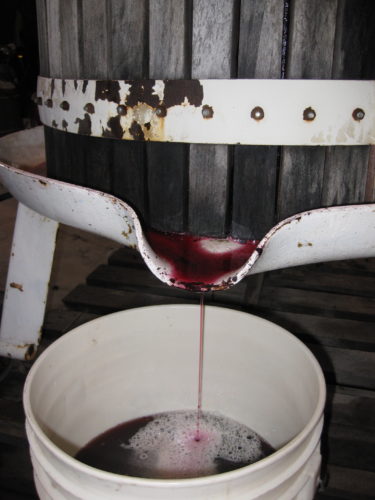Never in my experience as a Viticuluralist has the end of a growing season been so clearly defined. A couple of weeks back I glanced at the long term forecast and didn’t like what I saw. As the resulting “Frankenstorm” began taking shape, the decision to harvest our last fruit of the season on Friday, October 26th was an easy one.
The sunny and warm conditions we experienced that day belied the imminent storm hovering in the Atlantic. We happily snipped clusters and reminisced about the unique season we had just experienced. Unprecedented heat and prolonged periods of drought combined to give us the ripe grapes we now toted to the wagon. Slowly but surely, the five rows I had chosen for our 2012 Cabernet Sauvignon graciously handed us their bounty. As usual, we harvested three rows from our younger Clone 169 Block and two rows from our trusty “Old Block”. I’ve come to appreciate that these two vineyards complement one another very well. I count on the Clone 169 vines for the ripe, dark fruit characters, while the old block always supplies a uniquely elegant structure.
As we set up the crush pad later that afternoon, I was struck by the harmonious way old vintages seem make way for new ones. Just as the 2012 Cab Sauv grapes were processed into bins in the back of the barn, the last few cases of 2009 Cab Sauv were making a hasty exit out the front door! The interior floor space freed up by these case sales was much needed for the incoming bins. A second example arises as the 2012 Shiraz finishes fermentation. It would need to be pressed soon, meaning the 2010 Shiraz must be racked out of barrel and blended, so the wood can be re-used to house the pressed 2012’s. This poetic cycle appeals to my love of order and flow – one in, one out. The fact that 2010 and 2012 were very similar growing seasons deepens the bond between these two wines that now share both lineage and cooperage.
I would like to thank all the people who have braved the wet weather to pay us a visit over the busy months of harvest. I apologize to those “first-timers” who came at a time when our once plentiful stacks were now gone or critically low. We do still have limited quantities of 2009 Pinot Noir and 2009 Cab Sauv Icewine available, and we plan to stay open for tastings until Christmas. Please stop in if you have a chance.
Cheers to a great vintage!!




